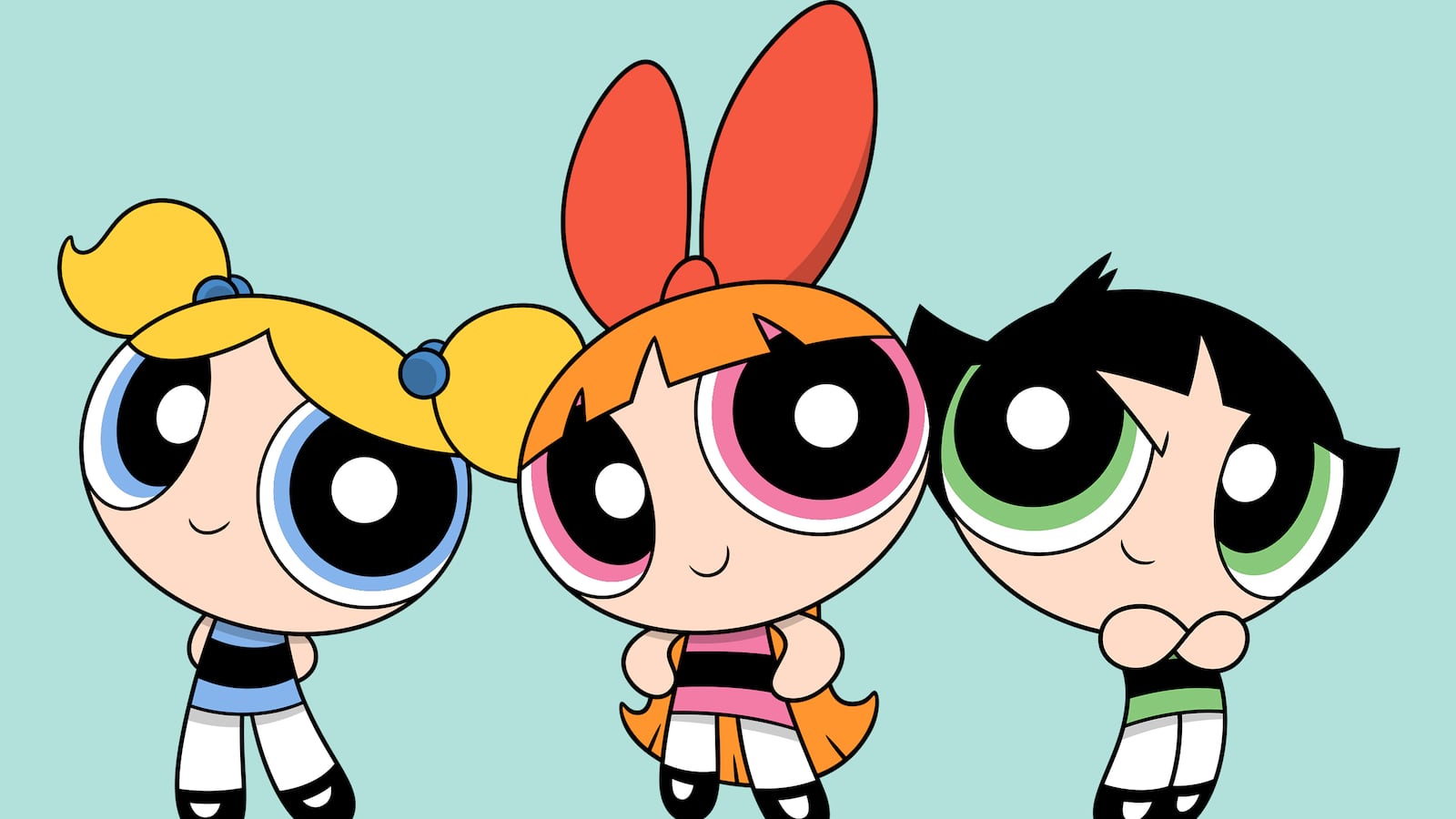From Fuller House to the joyous debut of Gilmore Girls on Netflix, millennial nostalgia has become a potent catalyst in the pop culture zeitgeist. Monday’s premiere of the new Powerpuff Girls reboot is just the latest boon of this fixation.
The original Powerpuff Girls aired on Cartoon Network between 1998 and 2005. For every millennial who was raised in front of a television set, flipping between Cartoon Network, Disney Channel, and MTV, Powerpuff Girls holds a special place in our hearts. Unlike the oversaturated glamour of TRL, or the dubious morality of The Suite Life, Powerpuff Girls had a sugary-pink heart and a girl power message.
The animated series followed the lives of three superheroes, created from a twee cauldron of sugar, spice, everything nice—and Chemical X, the secret ingredient that gives them their power. These perfect girls (with a twist!) fought crime in Mary Janes and matching striped pinafores. There was Bubbles, the giggly one, Blossom, the type-A control freak (think Paris Geller as painted by Margaret Keane), and Buttercup, the badass.
While Powerpuff Girls’ location in Townsville, USA was meant to signify a Main Street mentality, the show contained some overtly coastal politics. Diehard fans of the original may very well remember it as a fabulous queer confection—chock full of single dads, villains in drag, and crash courses in feminism 101.
For everyone who enjoyed the cartoon for its surreal, bold visuals, as well as its baby radicalism, Monday’s revamped premiere will be a welcome addition to the Powerpuff canon. The first episode, “Princess Buttercup,” gives the people what they want by focusing on the coolest Powerpuff—Buttercup.
Buttercup is feeling alienated from her two, hyper-feminine sisters, who would rather scrapbook than arm wrestle with a piece of construction equipment. Buttercup is a Shane in a land of Carmens—sorry for trying to make The Powerpuff Girls gay, but hey, it’s 2016—until she meets a gang of kickass ladies as cool as she is.

Enter the Derbytantes, an all-girl skate gang who play “deathball” all day. They never take off their roller skates and they take frequent pizza-ordering breaks. Obviously, they are incredible. While Buttercup all but ditches her sisters to hang out with the Derbytantes, at the end of the day she remembers that she’s a Powerpuff Girl forever (kind of a let down, to be honest), and brings her new friends to help fight crime and bring girl-powered world peace back to Townsville.
Aside from a revamped logo, new theme song, and softer graphics, the new Powerpuff Girls looks remarkably like the old. Quick shots and even quicker punchlines carry over from the beloved ’90s iteration. But some new updated features are sure to please Generations X, Y, and Z.
For one, Powerpuff Girls isn’t afraid to flaunt the fact that it has entered the 21st century. The sisters get crime alerts on their iPhones, and monsters can be ordered through an online Uber-type service (even more realistically, the monsters politely ask for four stars after a job well done). Delightful visual cues like on-screen text-speak and Kanye glasses keep the new reboot from over-exploiting pure nostalgia.
More importantly, the reboot features a renewed obsession with character-driven plot lines. In the original series, episode arcs often followed the predictable narrative of monster attack followed by super girl intervention. The reboot promises to take greater risks: The entire second episode is framed not by an impending apocalypse (although, obviously, danger does come to Townsville), but rather by a shared quest to see a One Direction-inspired boy band live in concert.
In this episode, a simple jinx is as powerful as an unbreakable prison, and inter-girl squabbling can be just as deadly as monsters or demons. Think of it as the Heathers model—when growing up really does mean war, every little obstacle can feel like the end of the world. This approach appeals to younger viewers by recognizing their feelings and experiences as valid and noteworthy. It also satisfies older fans, who are likely more interested in the trials and tribulations of the girls themselves than the routine monsters they will inevitably defeat.
Armchair scholars have long lauded the Powerpuff Girls as a product of third-wave feminism’s reclamation of femininity and consumerism; a vision of womanhood that celebrates every woman’s right to simultaneously enjoy feminism and arm-wrestle the patriarchy. The reboot promises an even more deliberate engagement with feminist themes. The first two episodes barely feature any masculine presence or intervention, while Buttercup’s personal reckoning with gender norms and identity takes up considerable space in the premiere.
And the progress isn’t just on the screen. According to Executive Producers Bob Boyle and Nick Jennings, women make up between 50 and 65 percent of the crew on the new series. Jennings explains, “Animation in the past has generally been a white-male dominated field, but times are changing…If you’re working with just white males, it’s easy to fall into putting that type of character into the cartoon, but that’s not reflective of the world or our audience these days.”
With its progressive politics and updated 2016 sensibilities—from heavy sarcasm to smartphones—the new Powerpuff Girls is sure to please kids and millennials alike. And the fact that the mayor of Townsville bears a passing resemblance to Bernie Sanders can’t hurt.






